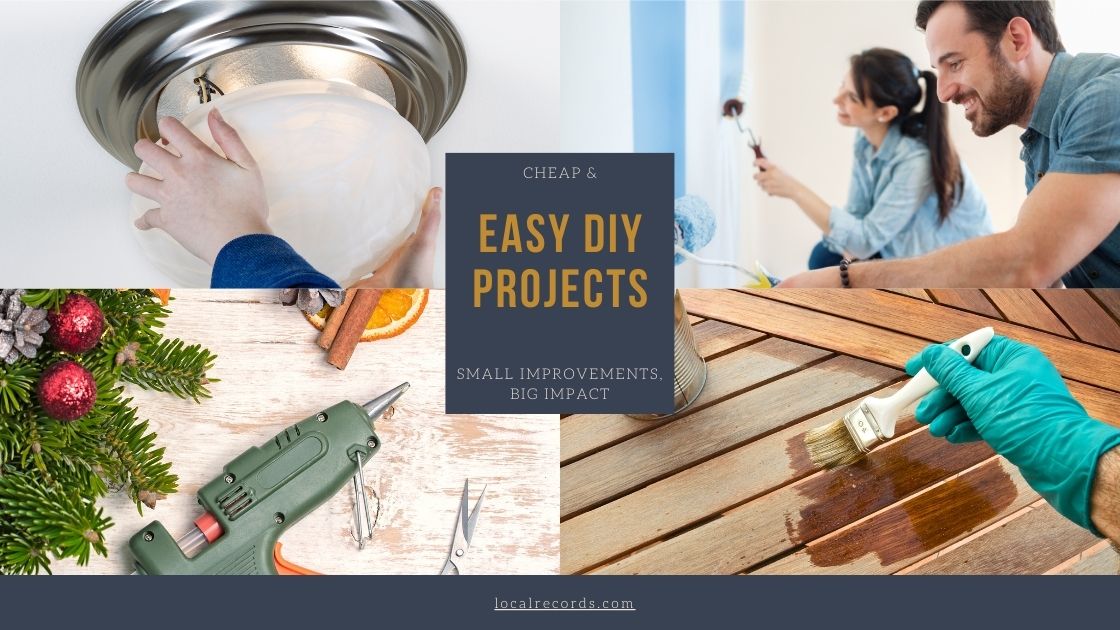HOW TO: 5 Easy Affordable DIY Flooring Options


These days, more and more homeowners are taking it upon themselves to repair, upgrade and renovate their own homes rather than shelling out a lot of money to hire a contractor says, Local Records Office. With newer manufacturing technologies making products much easier to install, this is nowhere more evident than it is in flooring. If you are considering having new floors installed in your home, here are five easy flooring selections to choose from that virtually all do-it-yourself homeowners can successfully manage.
Laminate Floors
Laminate floors, also known as “floating floors,” do not require you to remove your existing flooring unless it is carpet. This type of floor does not get attached to the floor below it, but rather it sits directly on top of the floor, hence the “floating” classification.
Laminate flooring is engineered to look like wood, ceramic or natural stone but installing it is nothing like the labor-intensive methods required to install those other materials. Instead, laminate floor tiles or planks feature a tongue and groove system that’s used to hold the pieces together.
There are many different types of laminate available on today’s market and the price can differ greatly between products. It is important to understand that in the case of laminate flooring, you do get what you pay for. More expensive laminate is almost always thicker and of higher quality.
Engineered Wood Flooring
Engineered wood is the preferred way for the do-it-yourself homeowner to install his or her very own hardwood floor. These planks are made and finished at the factory so there is a need to have the floor sanded or finished in the home after installation like there is with a standard hardwood installation. These planks are similar to laminates as they too feature a tongue and groove installation system.
Also like laminate flooring, engineered hardwood gets installed over a thin rubber-foam underlayment. One thing homeowners should know about engineered hardwood is that while it is considered a hardwood floor, the planks are not cut from a solid wood piece like traditional hardwood flooring. Instead, the planks are made up of three layers – a bottom layer of veneer, a middle layer of wooden cross-bands and a top layer of pre-finished hardwood.
Cork Plank Flooring
Cork is fast becoming one of the most popular choices for home flooring because it has many qualities other floor options don’t offer. Cork is a natural insulator; it is soft underfoot; it’s highly sustainable and it is incredibly durable. It is also naturally resistant to mildew, mold, and insects and it can accept a wide range of stains and topcoat finishes for a unique, custom look.
Cork flooring was at one time glued down, but new products are available that feature the popular tongue and groove installation technique used by laminate and engineered hardwood floors. For this reason, most modern cork floors are floating floor installation.
Cork flooring is one of the more expensive DIY flooring options, but it is also one of the few that can actually add to the value of your home so it is considered to be money well-spent.
Carpet Tile Floors
Installing wall-to-wall carpeting is a painstaking process. Between cutting the carpet to size and stretching it, the average homeowner could wind up losing a lot of money if they make one mistake with a utility knife. But, carpet tiles make it easy to install carpeting in a room.
Most common carpet tiles measure 20 square inches and they get connected to each other by self-adhesive dots that get applied to the bottom edges of the tiles. The next tile in the line simply gets stuck to the dots adhered to the previous tile. The adhesive dot installation technique makes this type of installation a floating floor because the carpet squares are attached to each other but not to the subfloor.
Carpet tile flooring offers a few unique advantages over wall-to-wall carpeting, such as the ability to create a customized look featuring several different carpet designs and the ability to remove a soiled or damaged tile for easy replacement and repair.
Vinyl Floors


Vinyl flooring tiles have long been a DIY flooring staple but in recent years, vinyl sheet flooring has progressed to the point that it can be installed in a floating floor format. Whereat one time vinyl sheet flooring had to be glued down across the entire subfloor or along its perimeter, today’s vinyl sheets can be custom-cut to fit your floor and laid in place without worry about the ends curling up.
Simply lay the vinyl sheet in place and install shoe molding along the perimeter wherever the vinyl meets the wall and that’s all it takes to install this type of flooring.



